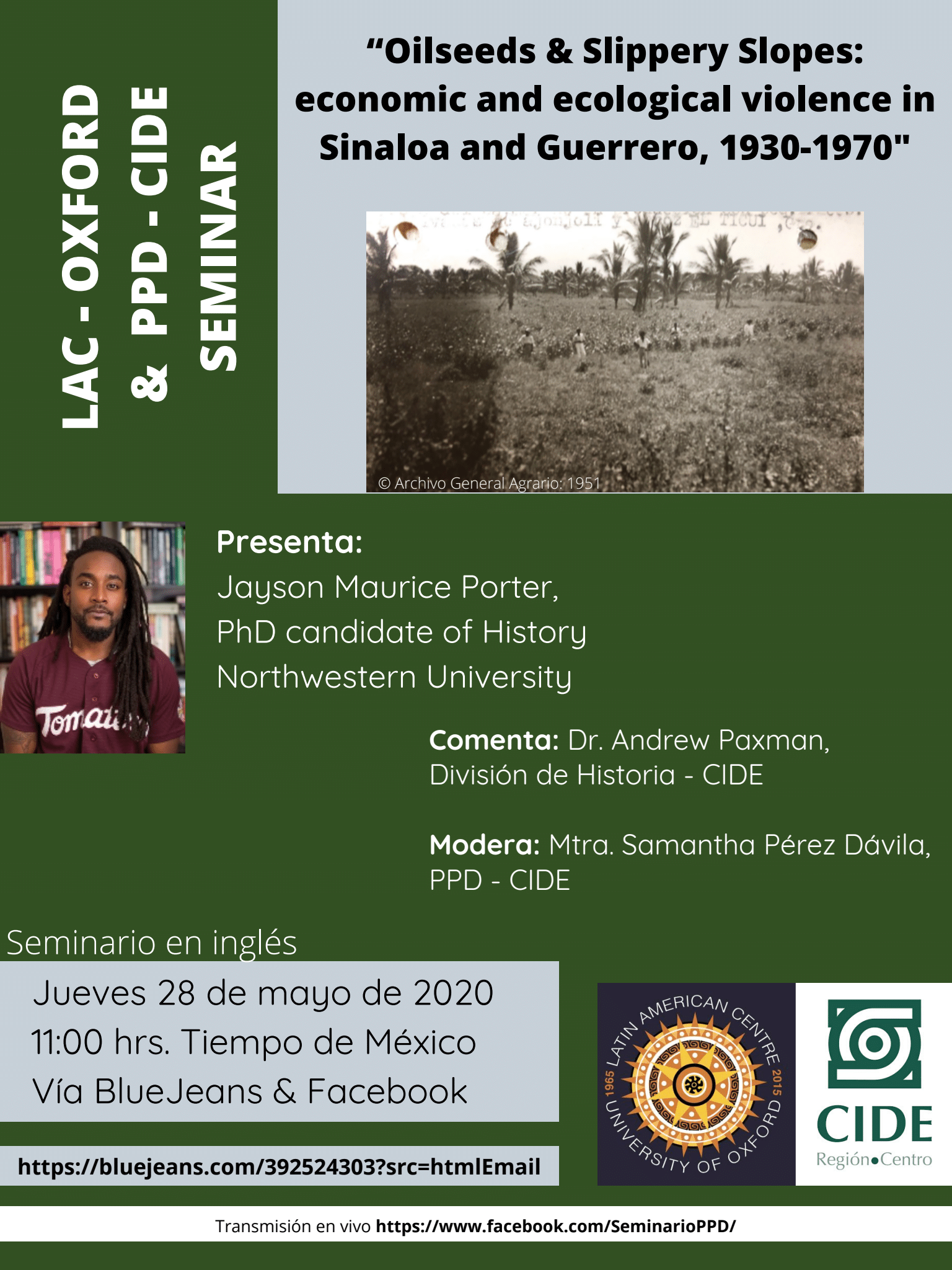Oilseeds & Slippery Slopes: economic and ecological violence in Sinaloa and Guerrero, 1930-1970

Farmers fought victoriously for and against the national government, but then lost to coconuts. Under the leadership of local businessman Amadeo Vidales, laborers from coastal Guerrero first took up arms to defend the post-revolutionary government in 1923, but three years later launched a small scale rebellion of their own and won. The state granted Vidalistas access to land and palm trees in 1930, as officials did with countless other ex-soldiers after the Mexican Revolution (1910-1920). But neither revolution nor rebellion prepared these ex-rebels for the three waves of violence that accompanied coconuts: agrarian, economic, and ecological.
This essay is not about drugs, but instead details a slippery slope between licit-oilseed and illicit-oilseed expansion set into motion by multiple forms of violence. Both legal and illegal crops grow best on slopes in Costa Grande, but methodologically this slippery slope aims to draw a correlation between the two.
It suggests that environmental history offers an angle of analysis into understanding drug cultivation.
In coastal Guerrero, the political history of coconut development helps us understand the proliferation of marijuana cultivation in the 1960s. By that decade, Guerrero was the largest producer of coconuts in the Americas but was better known for Lucio Cabañas’s peasant rebellion and a strain of marijuana called Acapulco Gold. I suggest this social resistance and drug cultivation emerged in the region due to coconut-related state policies rather than the absence of the state.
Enlace directo aquí
Más Vistos
- Los precios de la marihuana en México
- “Drogas y política de drogas en el escenario de la pandemia por la COVID-19...
- La cola del dragón: el opio en Asia Central (1880-1960)
- Exposición de la juventud al tráfico de drogas en América Latina y el Caribe
- Drogas y violencia en tiempos de pandemia. Consecuencias y respuestas
Más Recientes
- La trayectoria política de la violencia urbana en MX
- Mujeres en grupos de delincuencia organizada y Regulación de cannabis en Chile
- Presentación de la película El ocaso, la noche, el amanecer
- Drogas y violencia en tiempos de pandemia. Consecuencias y respuestas
- Militares a nivel de calle en el noreste de México

